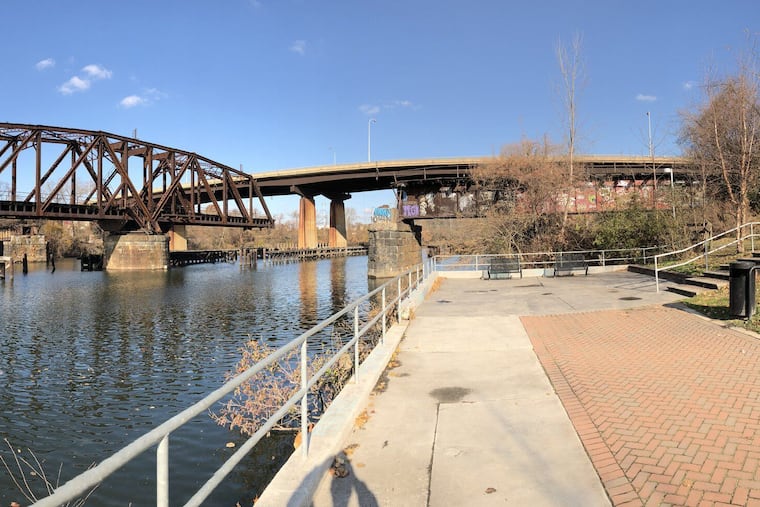$14 million structural and biking upgrades to Grays Ferry Bridge should be finished in the spring
The original contract has in part grown to accommodate a protected bicycle lane on the bridge's westbound side.

A multimillion-dollar rehabilitation of the Grays Ferry Avenue Bridge, slated to wrap up in the spring, will come with a bicycle-friendly addition not included in its initial plan.
Only one lane along the thoroughfare, between 34th Street/University Avenue and 47th Street will be open from 7 p.m. Thursday until 5 a.m. Friday to make way for bridge-paving, “one of the final stages” of the nearly $14 million endeavor, according to the Pennsylvania Department of Transportation.
The improvements to the bridge, crucial in connecting South and Southwest Philadelphia, started in 2018 to fix structural features, improve the drainage system, repave the concrete deck, and put in new sidewalks, as well as protected bike lanes. The original $13.3 million contract has since grown in part to accommodate a protected bicycle lane on its westbound side.
PennDot had planned to install a 10-foot-wide, barrier-separated lane for bikers and pedestrians on the bridge’s eastbound side, connecting to the nearby Schuylkill River Trail.
But to cycle over the bridge, shoulder-to-shoulder with speeding traffic while dodging severed hubcaps and shattered glass, is a dangerous game. A call for greater safety measures to its westbound side from city officials and transportation advocates spurred PennDot to rework plans, spokesperson Brad Rudolph said.
“We felt that due to the concerns of the community and the biking community, that it was feasible for us to do, and we decided to add it to the contract," Rudolph said. "It was 100% state funds, so it’s state funding, but we felt the need was there.”
The 1,831 feet of the “Qwick Kurb Channelizing System” since added to the project has cost $165,000, Rudolph said.
Work on the traffic lanes is expected to be completed later this year, with the full project to finish in the spring when crews will install the westbound curb feature, Rudolph said.
There were 71 crashes reported on the bridge from 2015 to 2019, including four involving pedestrians, resulting in injuries to 91 people, according to PennDot.
Last year, the urbanist political action committee 5th Square circulated an online petition for the department to include protected bike paths for both sides of the bridge. It recently called the changes on the westbound side a “big victory.”
The city will have more than 10 miles of protected bike lanes by the end of this year’s paving season, city spokesperson Kelly Cofrancisco said in a statement. The protected bike lane on the westbound side of the Grays Ferry Avenue Bridge “will provide a high-quality protected bikeway” in both directions, she said, and is in line with Philadelphia’s safe streets initiative, Vision Zero.
The safety enhancements will complement improvements soon to be made along nearby Washington Avenue. The city recently approved a redesign that will change the road’s layout from five driving lanes to three, as well as add parking-protected bike lanes.
The final stage of the Grays Ferry project also includes traffic-signal improvements from 48th to 34th Streets, as well as new signage. Originally expected to finish late this year, the completion timeline was pushed back because of a stay in construction projects amid the COVID-19 pandemic, weather-related problems, and the addition of the westbound protected bike lane, finalized in 2019.
“The biking community is a big part of what we’re doing out there,” Rudolph said, “And to create a multiuse lane for pedestrians and bicyclists is a big deal, a connection to the trail. I think a lot of people need it, and especially during these times.”